BBQ vs. Smoking – What’s the Difference?
-
Chris Dinesen Rogers
- Last updated:
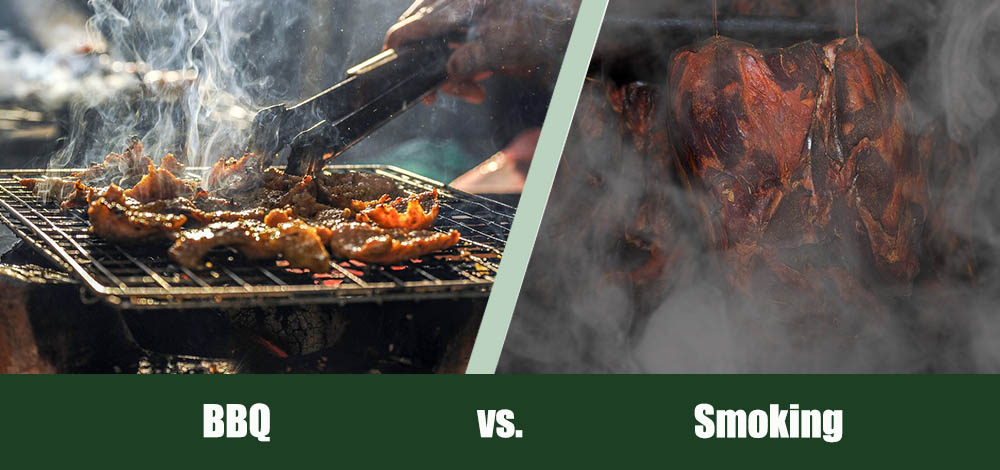
It’s the ideal way to celebrate summer, making a meal outdoors to share with your family and friends. All major holidays see some grilling action, with the Fourth of July and Memorial Day 1 topping the list. To clarify, grilling means cooking something relatively quickly over direct heat. You’ll typically use it with foods that taste best when prepared this way, like burgers. Barbecue, or BBQ, is a whole other animal. Then, you have smoking to think about.
Interestingly, “barbecue” is a contentious word in some parts of the country. The West Coast uses it interchangeably with grilling 2. Hence, the distinction we made earlier. It also refers to the outdoor feast in which you are enjoying these foods. Other parts of the country use “cookout” instead. But what’s the difference between BBQ and smoking? Let’s chew on this question for a bit.

Overview of BBQ
The origin of the word “barbecue” comes from the 1690s American Spanish term barbacoa 3, referring to the process of curing food with fire. Its festive connotation came later, in 1733. It evolved into our association we have with an open fire and grilling in 1931. The American English BBQ found its way into our vernacular in 1956.
This history is significant because its early origins point to the defining difference between grilling and barbecuing: time. Whereas the former is hot and fast, the latter is low and slow.
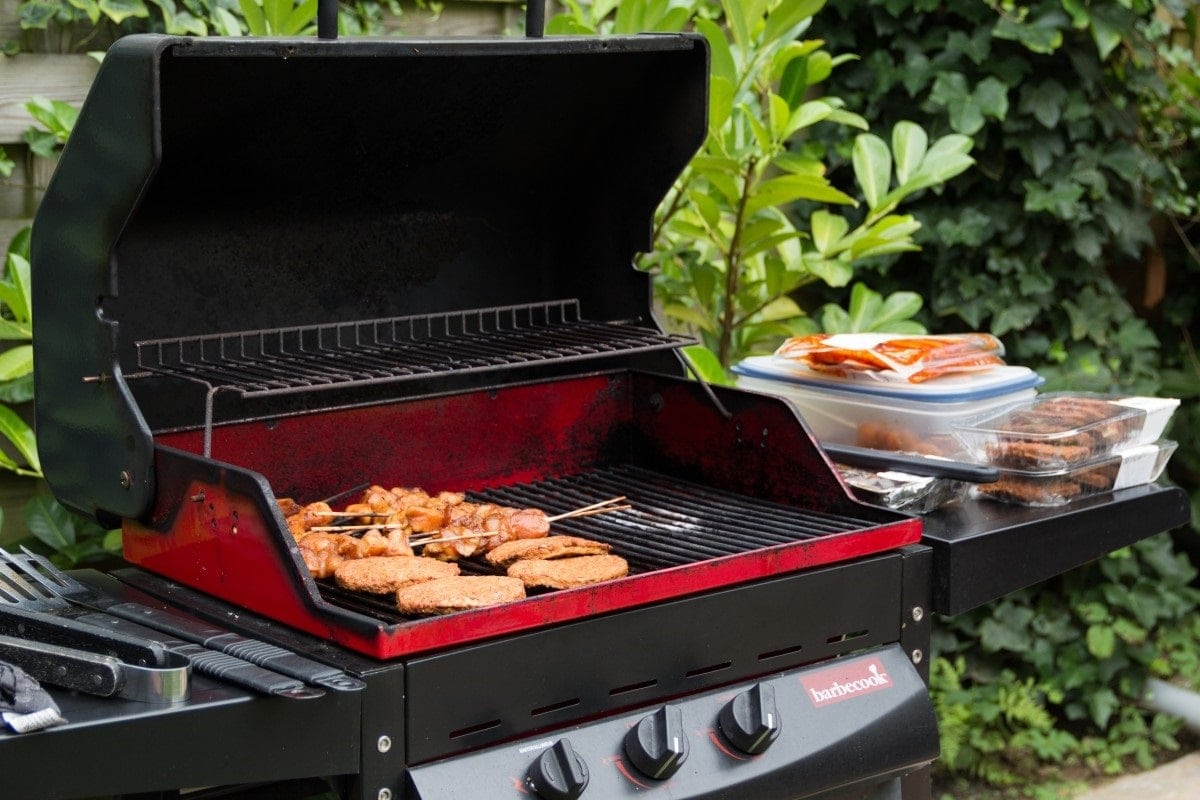
How it Works
BBQ makes the most out of indirect heat. When you’re grilling, you’re likely using temperatures over 350℉ or higher. On the other hand, barbecuing is typically a longer cooking process, with temps under 300℉. The difference lies with the type of protein you’re using and the result you want to achieve. It’s worth noting that your setup is different with barbecue than grilling because of this variation.
This fact applies particularly to charcoal. Instead of piling up a bunch of briquettes, you must give more thought to their placement. You can set up two cooking zones, with one side with charcoal and the other with none. The radiant heat will keep the grill warm without charring the meat. You can also use the so-called “snake method,” where you light the first few briquettes of a line circling the perimeter.
When to Choose It
BBQ works best with larger or tougher cuts of meat, such as beef brisket or pork shoulder. The drawn-out cooking will break down the collagen within the protein to add flavor and tenderize the meat. If you like the taste, you’re in good company. According to the Hearth, Patio & Barbecue Association (HPBA), 72% of individuals 4 opt to use this method for that very reason.
- Gas or charcoal grill
- Meat thermometer
- Grill thermometer
- Chimney starter
- Grill tools
- Mop or brush for sauces
- Grill mitt
- Charcoal or lump coal
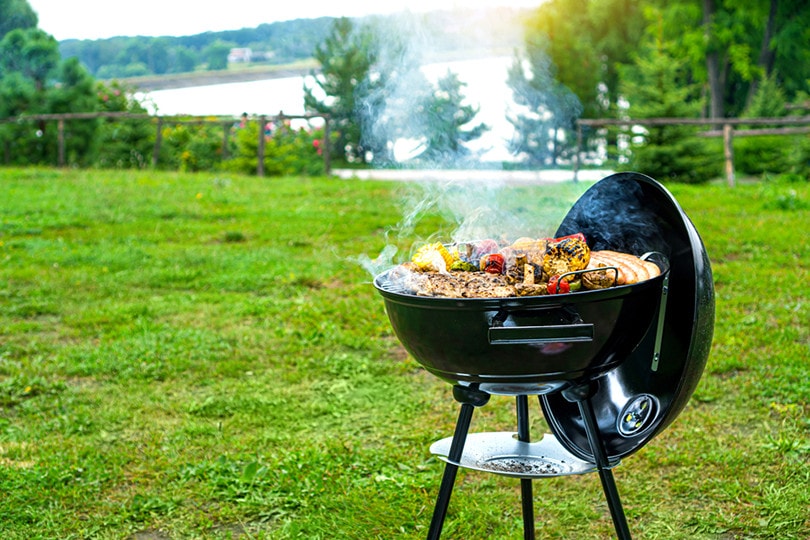
Types of BBQ
There are many variations on this theme. However, if you’re talking about BBQ sauce and different flavor profiles, four types stand out from the pack. They include:
- Texas Style BBQ
- Carolina Style BBQ
- Memphis Style BBQ
- Kansas City Style BBQ
- Flavorful results
- Tenderizing properties
- Use of affordable meat cuts
- Long cooking times
- Sometimes challenging temperature control

Overview of Smoking
You’ll find many similarities between BBQ and smoking, including the type of cooker you use. Aficionados will swear by opting for a smoker over a grill. You can get vertical ones in a range of sizes that are space savers while allowing you to prepare different foods in the same device. Offset models are long rectangular with a smoke box on the side. The advantage of this one is that it doubles as a grill.
On the high-end of the market, you’ll find Kamado design products that use different fuel types and are versatile as mini outdoor kitchens. Smoking goes back to the origins of the word “barbecue” because it is a slow cooking method using lower temperatures. It also adds another flavor element with the type of wood you use with your fuel source.

How it Works
Smoking works by using wood with a pleasant scent when burned with a fuel source that smolders them. The combination maintains the lower cooking temperature, much in the same way as barbecuing works. The difference is the smoke. The type of wood you choose will influence the flavor. For example, fruit woods, like apple or cherry, will impart sweetness to the meat.
Likewise, hardwoods, such as hickory or mesquite, will lend their unique taste to your foods. Other options include nut woods, like pecan or hazelnut, or the ever-popular softwood, cedar. The method depends on the type of device. Using a charcoal grill is the same as barbecuing with the addition of the wood. A smoker gives you more control over the temperature, depending on the model.
When to Choose It
You can use it in many of the same situations where you’d opt for a slow-cooking method with cuts like pork shoulder. However, you can also use it with other foods to lend its smoky goodness to your dishes.
You can smoke game, fish, or poultry. The type of protein you cook can make some wood choices more appropriate. For example, nut woods are an excellent choice for game that will complement their flavors.
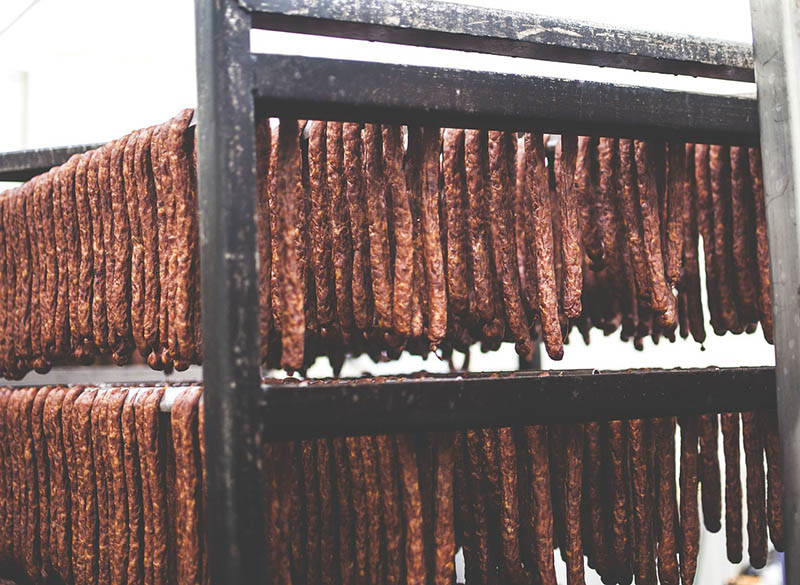
- Smoker or charcoal grill
- Meat thermometer
- Grill thermometer
- Chimney starter
- Grill tools
- Grill mitt
- Charcoal or lump coal
- Wood chunks
- Spray bottle
- Excellent flavor
- Many flavor combinations
- Ability to cook large batches
- Longer cooking times
- Temperature control
- Limited use with a smoker

Other Factors to Consider
The question of whether to barbecue or smoke is a personal preference. It’s also a matter of the equipment you have. A charcoal grill can do an excellent job with both cooking methods. If you only grill out occasionally, it might be your best option to see if you like the results you get without investing in a lot of extra stuff.
Temperature Control
If you don’t have one on the cover, you’ll have to get a thermometer with a meat probe to keep track of the meat temperature and the internal temp. It’s worth noting that both cooking methods are low enough that they can dip into the danger zone, which can increase the risk of consuming unsafe foods. It’s a worthwhile investment to save you a lot of hassle in the long run.
Learning Curve
Barbecuing and smoking have a steeper learning curve than grilling. We touched on temperature control, which a smart device can easily remedy. However, there’s also timing and learning how long foods take to cook. Many enthusiasts are more than willing to share their knowledge, so you’ll find plenty of information online. However, reading is one thing, and actually doing so is another matter altogether.
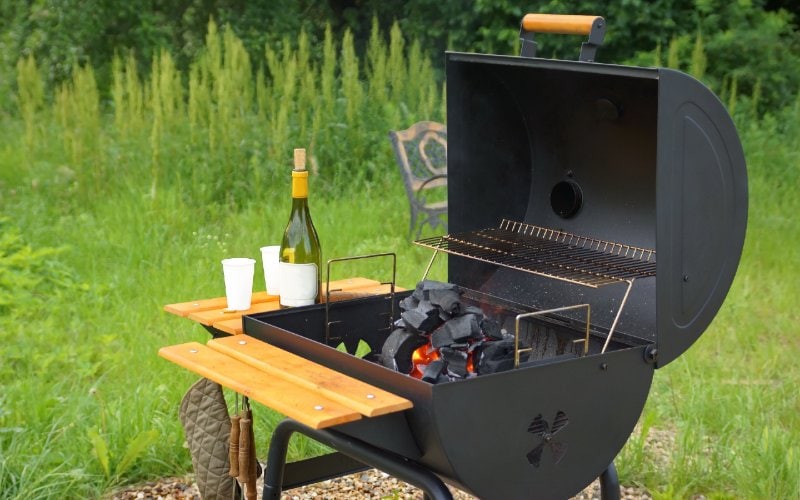
The other factor to consider is patience. Grilling over direct heat gives you relatively fast satisfaction. Smoking and barbecuing can take hours, depending on the cut. For example, a rack of ribs can take about 6 hours to prepare if you’re starting from scratch. The advantage is that you don’t have to babysit the food. You can do some yard work or play fetch with your dog while it’s cooking.
Smoking: Charcoal Grill or Smoker
Investing in a smoker might be worthwhile if you love smoked foods and plan to cook a lot. However, it lacks the versatility of a charcoal grill, depending on the model you choose.
Our advice is to start with your grill if you have one and experiment. Find out if you like this technique first. Either method can become an expensive hobby when you start looking into different rubs and sauces.

Conclusion
BBQ and smoking offer excellent ways to use affordable, larger cuts of meat to prepare delicious meals for your family. You can use either method with a charcoal grill. However, if you want to kick it up a notch, check out what a smoker can bring to your outdoor cooking game. In any case, you can learn some fun skills and add some tasty food to the usual rotation.
- https://www.hpba.org/Resources/PressRoom/ID/1691/Five-Grilling-Facts-In-Honor-of-National-Barbecue-Month
- https://www.eater.com/2016/7/1/12074310/barbecue-cookout-regional-differences
- https://www.etymonline.com/word/barbecue?ref=etymonline_crossreference#etymonline_v_5235
- https://www.hpba.org/Consumer-Information/Barbecue-Outdoor-Living/Smoker
- https://www.fda.gov/food/buy-store-serve-safe-food/safe-food-handling
Featured Image Credit: (L) Hai Nguyen Tien, Pixabay | (R) Markus Hendrich, Pixabay
Contents
